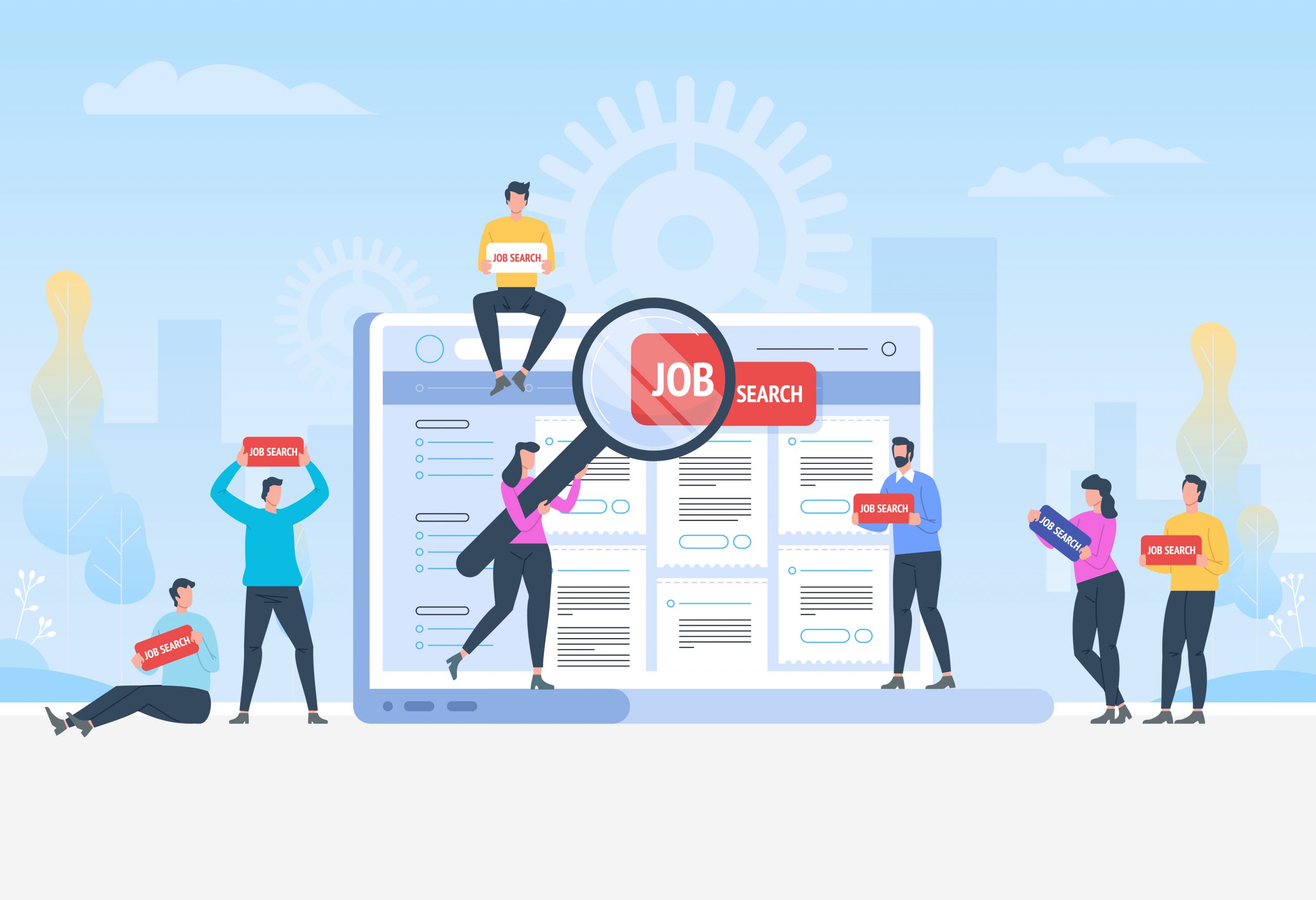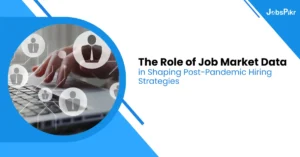Gallup’s State of the American Workplace report stated that 51% of currently employed adults are searching for new jobs or looking for new work opportunities and 58% of job seekers look for jobs online; in other words, this market is huge. There are many alternatives to scraping job data. Also, there are so many ways to utilize job data, to name a few:
- Fueling job aggregator sites with fresh job data.
- Collecting data for analyzing job trends and the labour market.
- Tracking competitors’ open positions, compensations, benefits plan to get yourself a leg up the competition.
- Finding leads by pitching your service to companies that are hiring for the same.
- Staffing agencies scrape job boards to keep their job databases up to date.
Challenges for Scraping Job Postings
First and foremost, you’ll need to decide where to extract this information. There are two main types of sources for job data:
- Major job aggregator sites like Indeed, Monster, Naukri, ZipRecruiter, Glassdoor, Craiglist, LinkedIn, SimplyHired, reed.co.uk, Jobster, Dice, Facebook jobs, etc.
- Every company, big or small, has a career section on their websites. Scraping those pages regularly can give you the most updated list of job openings.
Next, you’ll need a web scraper for any of the websites mentioned above. Large job portals can be extremely tricky to scrape because they will almost always implement anti-scraping techniques to prevent scraping bots from collecting information off of them. Some of the more common blocks include IP blocks, tracking for suspicious browsing activities, honeypot traps, or Captcha to prevent excessive page visits.
On the contrary, a company’s career sections are usually easier to scrape. Yet, as each company has its web interface/website, it requires setting up a crawler for each company separately. Such that, not only the upfront cost is high, but it is also challenging to maintain the crawlers as websites change quite often.
What Are the Options for Scraping Job Data
There are a few options for how you can scrape job listings from the web.
1. Hiring a Web Scraping Service (Daas)
These companies provide what is generally known as “managed service”. They will take your requests in and set up whatever is needed to get the job done, such as the scripts, the servers, the IP proxies, etc. Data will be provided to you in the format and frequencies required. Scraping job data services usually charge based on the number of websites, the amount of data to fetch, and the crawl frequencies. Some companies charge additional for the number of data fields and data storage. Website complexity is, of course, a major factor that could have affected the final price. For every website setup, there’s usually a once-off setup fee and monthly maintenance fee.
Pros:
- No learning curve. Data is delivered to you directly.
- Highly customizable and tailored to your needs.
Cons:
- Cost can be high, especially if you have a lot of websites to scrape
- Long term maintenance cost can cause the budget to spiral out of control
- Extended development time as each website will need to be set up in its entirety
2. In-house web scraping setup
Doing web scraping in-house with your own tech team and resources comes with its perks and downfalls.
Pros:
- Complete control over the crawling process.
- Fewer communication challenges, faster turnaround.
Cons:
- High cost – A troop of tech costs a lot
- Less expertise – Web scraping job data is a niche process that requires a high level of technical skills, especially if you need to scrape from some of the more popular websites or if you need to extract a large amount of data regularly. Starting from scratch is tough even if you hire professionals, whereas data service providers and scraping tools are expected to be more experienced with tackling the unanticipated obstacles.
- Loss of focus – Why not spend more time and energy on growing your business.
- Infrastructure requirements – Owning the crawling process also means you’ll have to get the servers for running the scripts, data storage, and transfer. There’s also a good chance you’ll need a proxy service provider and a third-party Captcha solver. The process of getting all of these in place and maintaining daily can be extremely tiring and inefficient.
- Maintenance headache – Scripts need to be updated or even rewritten as they break whenever websites update layouts or codes.
- Legal risks – Web scraping job data is legal in most cases though many debates are going around, and even the laws had not explicitly enforced one side or the other. Generally speaking, public information is safe to scrape and if you want to be more cautious about it, check and avoid infringing the TOS (terms of service) of the website. That said, should this become a concern, hiring another company/person to do the job will surely reduce the level of risk associated with it.
3. Using a Web Scraping Tool
Technologies’s been advancing, and just like anything else, web scraping job data can now be automated. There are many web scraping software that are designed for nontechnical people to fetch data from the web. These so-called web scrapers or web extractors transverse the website and capture the designated data by deciphering the web page’s HTML structure. You’ll get to “tell” the scraper what you need through “drags” and “clicks”. The program learns about what you need through its built-in algorithm and performs the scraping automatically. Most scraping tools can be scheduled for regular extraction and can be integrated to your own system.
Pros:
- Budget-friendly.
- Non-coder friendly – Most of them are relatively easy to use and can be handled by people with little or no technical knowledge. If you want to save time, some vendors offer crawler setup services as well as training sessions.
- Scalable – Easily supports projects of all sizes, from one to thousands of websites. Scale-up as you go.
- Fast turnaround – Depending on your efforts, a crawler can be built in 10 minutes.
- Complete control – Once you’ve learned the process, you can set up more crawlers or modify the existing ones without seeking help from the tech team or service provider.
- Low maintenance cost – As you won’t need a troop of tech to fix the crawlers anymore, you can easily keep the maintenance cost in check.
Cons:
- Learning curve – Depending on the product you choose, it can take some time to learn the process.
- Compatibility – All web scraping tools claim to cover sites of all kinds but the truth is, there’s never going to be 100% compatibility when you try to apply one tool to millions of websites.
- Captcha: Most of the web scraping tools out there cannot solve Captcha.
To sum up, there’s surely going to be pros and cons with any one of the options you choose. The right approach should fit your specific requirements (timeline, budget, project size, etc). Obviously, a solution that works well for businesses of the Fortune 500 may not work for a college student. That said, weigh in on all the pros and cons of the various options, and most importantly, fully test the solution before committing to one. At JobsPikr, we are always there to help with all your scraping job data requirements.




